PROLOGUE: I NEVER METAGAME I DIDN’T LIKE
One of the hardest aspects of creating a game—and consequently one of the most interesting aspects—is the idea of game balance. Games live or die based on how well balanced they are. Whether it’s through a series of extensive checks and balances or just through introducing random chance, game designers need to make sure there isn’t just one pathway to winning any given game.
But what happens when a game’s designers decide that a game benefits from being less balanced? How does that affect the game and how its players approach it?
If people play a game enough, they begin to learn its unwritten rules. What are the optimal strategies or plays? What strategies might others use? How do I counter or get around those strategies? As a result, a “metagame” emerges: an accepted optimal method of play based on unwritten rules and outside factors.
Perhaps the most well-known and easily explainable example of a metagame is that of the board game Risk. The accepted best way to play Risk is to take control of Australia, which has only one front to defend and, when held, provides a small but reliable bonus that adds up over time. Everyone who plays Risk a few times quickly learns that, while holding Australia doesn’t make for a guaranteed win, it’s still the safest, smartest strategy. Incidentally, this also makes Risk a pretty bad strategy game: because good strategy games need good game balance.
A poorly balanced game results in a stagnant metagame that disadvantages players who don’t use certain strategies. Fortunately, as people who play competitive video games know, sometimes games can be “patched,” allowing the creators to “buff” underpowered elements to make them viable or “nerf” overpowered ones to make them less viable. A patch can end up balancing things well and leading to a better, healthier metagame, or it can overcorrect and leave the metagame in an even worse position. Either way, the intention of these patches is to try to make as many playstyles as possible more viable.
However, game designers aren’t the only people who can affect a metagame. If a game is properly balanced, the players themselves will often shift the metagame by reading each other’s patterns and adjusting accordingly. Maybe it’s on a scale as small as a family or a small group of friends identifying who tends towards which strategies, or maybe it’s as big as the worlds of competitive chess or professional poker. Regardless, if the same people play the same game regularly, they eventually begin learning each other’s strategies and habits, then adopting those strategies or coming up with counter-measures.
This is why I find the ideas of metagames so fascinating: because it means that if a game is balanced enough and has a rich enough metagame, it never truly becomes boring. Any time the game looks like it might be solved, it evolves, whether through players finding new, unconventional tactics or creators making outside changes to the game.
And that’s a big part of why I love reality competitions, particularly Survivor. I’ve been watching Survivor for the 20 years and 40 seasons it’s been on, which is a number that puts it in the very unique position of having a very observable number of permutations. There have been enough seasons for the metagame to have visibly changed over time, but there are still few enough that it’s easy to see when and how all these changes occurred.
Of course, the other thing that makes Survivor an interesting case study in metagames is because it’s not solely a game. It tries to bill itself as plenty of things—an unscripted drama, a social experiment, an adventure series—but at its heart, it’s still a game show. And while contestants and analysts love to examine the “game” half of Survivor, many forget that it is just as much a “show.” Survivor is, at its heart, a TV product. Only a few people are ever selected to play it, but millions of people watch it. As such, it’s in Survivor’s best interest to focus on what keeps those millions watching over what makes for a fun, balanced game. And that makes its metagame extremely interesting—but not always in a good way.
The goal of any game is to measure certain skillsets. Whether it’s hand-eye coordination, speed, skill, agility, mental acuity, or even just dumb luck, almost every game has win-lose conditions that are based on whether or not a player has the skillset that’s being measured. Even cooperative games, where players are competing with instead of against each other, measure certain skillsets, often including cooperation, communication, and teamwork. A game’s rules are built around measuring these skillsets, which is why, when you change the rules or guidelines of a game, you change the skillset required to succeed.
Over the years, Survivor’s producers have deliberately pushed the game in certain directions, both by making changes to the game’s format and by feeding the audience certain narratives about what makes good gameplay. They have increasingly pushed for a game that rewards flashier, more aggressive playstyles. This is because those playstyles are more fun to watch and result in winners who feel like they actually won (as opposed to just not losing). And while on the surface “the winners seem more deserving” sounds like a good thing, it becomes much more insidious when you realize that this particular playstyle has overwhelmingly favored a certain demographic: men.
That’s the thesis statement, buried here, eleven paragraphs deep: Survivor’s metagame is interesting and cool, but also it’s gotten pretty undeniably sexist.
It’s taken a while to get to the point, but that’s appropriate considering that the changes that led to this trend have themselves crept in slowly. They weren’t particularly pronounced until more recent seasons, so this first part actually won’t even get to the changes that led to this trend. However, I want to establish this up front: this series of articles won’t have a fun or happy ending. While I think the changes made to Survivor are fascinating and worth examining, the metagame has also become something ugly, with producers desperately throwing everything at the wall to drive the game in a certain direction. My goals are largely to look at how a series of well-intentioned but poorly thought out decisions led it there.
Anyway, this is planned to be a four-part series, each covering ten seasons of the show. This first part will cover Survivor’s early days, how the players established and evolved the metagame, and how producers worked within that framework to find how best to both balance the game and make it TV friendly.
But before we can get into the metagame, we first need to understand
THE GAME
Fortunately, the initial incarnation of the game is fairly straightforward. Survivor is a game where 16 strangers are thrown into the wilderness together for 39 days and vote each other out until only one remains. At the beginning, they’re divided into two tribes of 8. These tribes compete against each other in immunity challenges, named so because the winning tribe is “immune” from having to vote a member out. The losing tribe attends Tribal Council, where each player votes for another member of their tribe, with the player receiving the most votes being eliminated.
The cycle repeats until there are 10 players left in the game, at which point the two tribes merge and it becomes an individual game. Tribal immunity challenges become individual, with only one player winning immunity from the next vote. When only two players remain, a jury consisting of the last 7 players voted out, who have been sitting in on Tribal Councils since their elimination, vote for a winner.
So in short, players vote each other out until they can’t vote each other out anymore, at which point the eliminated players make the final decision.
So now that we’ve got the baseline, we can talk about
THE METAGAME
PART ONE: THE BEGINNING OF THE METAGAME
I regret to inform you, after all that buildup, that the foundation of Survivor’s metagame is actually pretty simple and gets cracked fairly early on in the first season. It’s…you just form a voting bloc. That’s it. You get together a group of people who have a mutual interest in voting with each other instead of against each other, and you just…pile all your votes on one person. It’s that simple. If you can get in with a majority, and that majority sticks together, that group will make it to the end every time. This is the foundation of Survivor strategy, and has been the cornerstone of the metagame from the first season no matter what other changes are made.
But to elaborate, I think the game ends up breaking down into three distinct phases that are going to be more or less the same throughout most seasons. First have the early game, the pre-merge. This is where you lay the groundwork for the foundation of your game. As former contestant, podcaster, and strategist Rob Cesternino has said multiple times on his podcast, it’s hard to win the game in the early stages, but it’s easy to lose it. You don’t want to be a liability, either in terms of challenges or camp life. You also need to be building relationships so that you can leverage those later in the game.
The second phase, the middle game, is the post-merge. This is the point where you go to war. You gather your numbers, you solidify your alliance, and if you win the initial clash, you pick off the other side, starting with the biggest threats, and leaving the weaker members for last.
Finally, there’s the endgame, where the dominant alliance has to turn on itself. This phase is all about making sure you can make it to the end, while simultaneously eliminating the biggest threats to win or to take your spot in the finals. For much of the game players are concerned with not losing. In the endgame? That’s when they need to make a path for themselves to win. You’d think that, since there are fewer people in the game, things would be simpler, but it’s actually way more complicated because every vote matters so much more. Because there are so few votes each one holds more power, and if even one round of voting doesn’t go your way, it could mean the end of your game. In the endgame, the timing of who to eliminate when is vital, and there’s no room for margin of error.
This is why individual immunity becomes even more important in the endgame: with fewer players, there are fewer places to hide and being able to ensure your own safety is vital. What’s more, winning individual immunity ensures that your target doesn’t have safety. Every immunity win drastically affects the shape of the endgame, and while you can win the game without winning immunity, it makes the path there more difficult.
With the basics of the metagame established, let’s let’s look at how it’s been implemented through the years and how it’s changed, starting with season 1: Borneo.
Now, Borneo is a little weird in how things play out, because while a lot of people figured out this strategy of forming an alliance, very few people actually wanted to implement it. It’s important to understand that alliances were seen by most players (and viewers) as an underhanded tactic that not only went against the spirit of the game, but would end up making them look bad on national TV and permanently destroy their reputations. While I think this makes it one of the most interesting seasons in terms of how the story ultimately plays out, it also means that in terms of specifically metagame, it’s only worth talking about the Tagi Four (and also Sean). Richard Hatch, Rudy Boesch, Sue Hawk, and Kelly Wigglesworth of the Tagi tribe ended up forming an alliance at some point in the early game, and ultimately decided to bring Sean Kenniff with them to the merge.
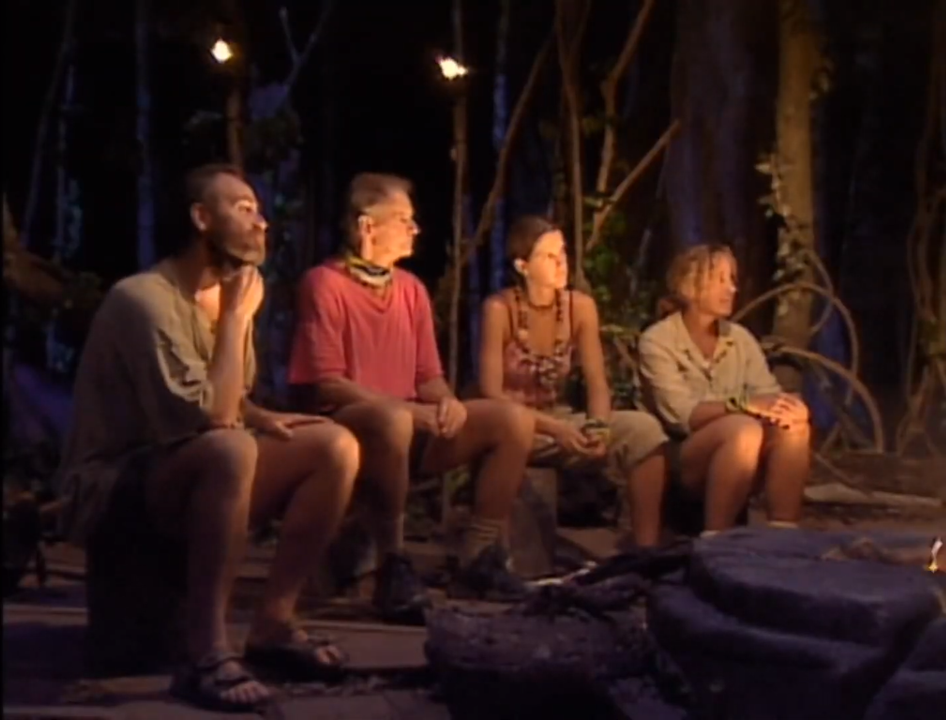
At the merge, the Pagong tribe was disorganized, meaning that Tagi was able to, in a 4-1-1-1-1-1-1 vote, take out the closest thing Pagong had to a leader. From then on, the fact that Sean (a doctor of neurology, mind you) talked openly about his “Alphabet Strategy,” where he would simply vote down the alphabet—with the G and J names of Pagong coincidentally and conveniently falling before the R and S names of Tagi—meant that the Tagi Four were able to pile on top of his votes, maintaining a comfortable numbers lead. Pagong pled with Sean to join with them or at least change his very exploitable strategy, but Dr. Sean, who was either an idiot or just playing one on TV, refused to believe there was an alliance of people on his old tribe taking advantage of his very open votes for people from the opposing tribe.
…Borneo’s metagame was…interesting.
So moving into the endgame, it’s important to note the dynamics of the Tagi Four (also Sean). Initially, Richard and Rudy were tight, and Sue and Kelly were tight. However, Kelly eventually started having second thoughts about the alliance. Richard, Rudy, and Sue weren’t happy about that, and that (as well as maybe other things that didn’t or couldn’t make air) really drove a wedge between her and Sue in particular. The plan was initially to take Kelly out at the final six, before Sean and the final Pagong member. Unfortunately for them, Kelly ended up winning the four final immunity challenges, so they never actually got the chance to vote her out. So after the final Pagong member leaves, Sean knows he’s the low man on the totem pole and exits with grace, happy to have gotten as far as he did. It’s worth noting, though, that Sean was fairly close with Richard.
At the final four, Richard and Rudy stick together to vote out Sue, and while Kelly initially votes with Sue, she flips on the revote instead of forcing a tie, which really angers Sue. So that’s Sean that’s pro-Richard, and Sue that’s anti-Kelly. And here’s where things get really interesting. The final immunity challenge is an endurance challenge, where you just have to stand on some posts and keep your hand on the immunity idol as long as you can. Since the people who don’t win would be forced to vote for each other, winning this challenge keeps you safe AND means you cast the sole vote that decides who ends up with you in the finals. So winning this challenge gives you immense power in the game. And shortly into the challenge, Richard just…steps down.
When the host asks him about it, he explains his thought process. I could paraphrase, but I think this one’s worth quoting in its entirety.
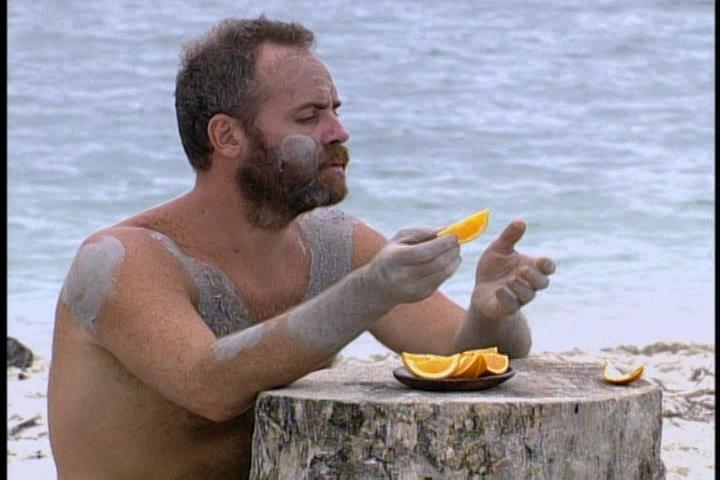
“This game is about a lot of different things, and one of those things is mental strategy. And I thought to myself, it’s doubtful that I would outlast Kelly, because she just stands there until the cows come home, period. And it doesn’t mean I’m giving up a million dollars, necessarily. […] It means whoever is immune has to pick between the other two people as to who goes to the jury. Each of them could, 50-50, pick me. I really can’t tell. Even if I am somebody that she’d be better up against I don’t know that she would do that. And even if Rudy’s been loyal the entire time, I don’t know that he’d continue to be so. I think so. It’s all a game of odds, and who knows what somebody’s going to actually do?” ~Richard Hatch, Survivor: Borneo, Episode 13
Rudy is both Richard’s closest ally and his biggest competition in the final vote, since pretty much everyone likes Rudy. If Richard wins, he either has to betray Rudy and vote him out, potentially losing his jury vote, or he has to vote Kelly out and go to the finals with someone who will likely beat him. On the other hand, he feels like if Rudy wins the challenge, he’s a loyal person who would take him to the finals and at least give him a shot, and if Kelly wins, she’d have a better chance of beating him than of beating Rudy. Either would take him to the finals, and if Kelly wins, which looks likely, that would mean that Rudy is out of the game and on the jury, with no blood on Richard’s hands.
In other words, if Richard were to win the challenge, he’d be in a lose-lose situation, but his position if he steps down is actually win-win. They both have to take him, and he explains this to the host in front of both of them, reinforcing to Kelly that she can’t afford to take Rudy and reminding Rudy of his loyalty.
So of course Kelly wins as Richard calculated, Rudy is eliminated, and Richard and Kelly are in the finals facing a jury where the last three members of the jury are pro-Richard, anti-Kelly, and pro-Richard. Meaning that Richard only needed to get one more vote to have a 4 out of 7 majority. Which, of course, he did.
There’s one final moment from Borneo I need to bring up: Richard’s argument to the jury that he played the game as ethically as possible. With that, he invited the idea that alliances weren’t necessarily a dirty way of playing, which, in a way, gave players permission to use them going forward. See, Tagi were still seen as the “bad guys,” but the impact of their alliance meant the game couldn’t ever be played any other way. Since it’s the best way to win in terms of game theory, someone would always get greedy and use that strategy. And since the only way to counter an alliance is to have an alliance of equal or greater size, well…there’s really no option. You need to get over the idea that an alliance is unethical, or you’ll never have a chance of succeeding in the game.
And that’s essentially how Season 2: The Australian Outback ended up going down. At the merge, the two tribes entered with equal numbers, everyone stayed allied with their tribes, and when one side won the tie-breaker, they more or less just steamrolled everyone from the other side. There, that’s the Australia metagame done in a single sentence.
Well, okay, that’s not entirely true. In The Australian Outback, something was done that was attempted in Borneo: an alliance turned on its own members before eliminating all of the competition.
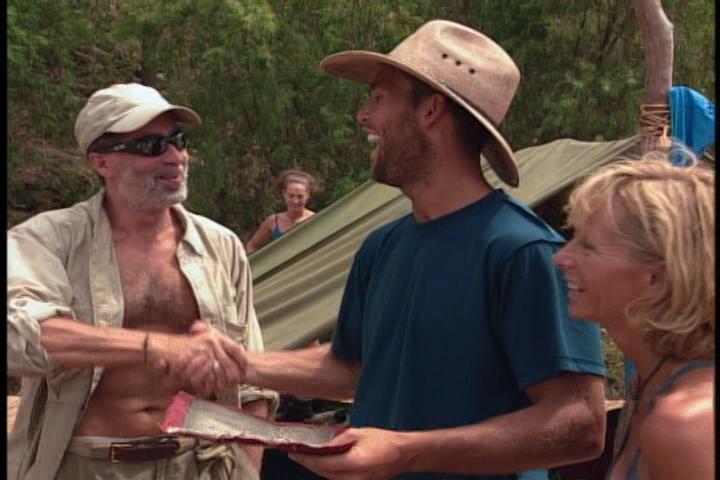
In Survivor: Borneo, Kelly began playing both sides and began waffling on the Tagi alliance, which Richard, Rudy, and Sue weren’t pleased about. She was supposed to be eliminated at the final six, until she won immunity. Then she was supposed to be eliminated at the final five, before again winning immunity. Then at final four, before, well…you get the picture.
In The Australian Outback, Tina Wesson, Colby Donaldson, and Keith Famie formed a tight three on the Ogakor tribe, with Tina’s dislike for Jerri Manthey and her friend Amber Brkich putting them on the outs. When Ogakor won the deadlock at the merge, two members of the opposing Kucha tribe were eliminated in 10th and 9th place, giving Ogakor a 5-3 lead.
However, rather than keeping Ogakor together until the final five, Tina, Colby, and Keith decided to take the opportunity to eliminate Jerri as early as 8th place. Jerri was a strong-willed, aggressive player, and eliminating her early prevented her from potentially mounting a resistance later on. They were still able to keep a 4-3 lead, and managed to convince the more passive Amber to stay with them and maintain that lead. Then, when Ogakor’s lead was 4-2, they cut Amber, reducing their lead to 3-2 heading into the endgame.
Tina, Colby, and Keith’s decision to turn on their own alliance early protected them from Jerri, but it also protected them from each other. By maintaining only a narrow lead, they ensured that they had to stick together in order to maintain it. They could stick together to the final three, where they could fight it out honorably in the final immunity challenge. Or, one of them could take their chances with the other side, who would be less loyal to them and more likely to beat them in a jury vote. Maintaining a narrow lead forcibly solidified their bond and carried them all the way to the final three.
The Australian Outback also featured a case of players using a narrative as part of the metagame. Because Borneo’s Tagi alliance was so poorly received, the players of The Australian Outback had the idea that “the good guys” needed to win this season. This was particularly enforced by Tina, who, of course, positioned herself as one of “the good guys.” This helped solidify Tina, Colby, and Keith’s bond, helped them justify turning on their own allies, made the remaining members of the opposing tribe feel better about them, and—perhaps most importantly—secured Tina the win. Colby was the most dominant challenge competitor this season, winning the last five immunity challenges, including the final immunity challenge that gave him the right to decide whether he would face Tina or Keith in the final Tribal Council. In the end, he knew he could beat Keith handily, but that would be the less honorable choice. He instead faced Tina and lost in a narrow 4-3 vote…but didn’t seem to regret his decision one bit.
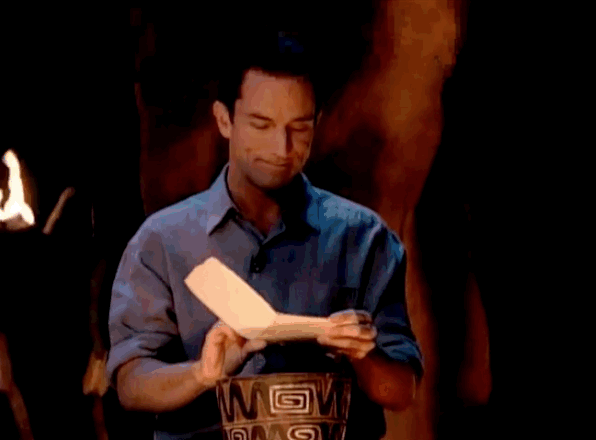
Season 3: Africa, played out similarly to the first two seasons, but this also marks the first time production really started updating the game’s formula. Time to talk about
PART TWO: SWAPS AND ROCKS
Okay, so the middle game of Borneo was essentially just one tribe picking off the other. And then, in Australia, the middle game was essentially just one tribe picking off the other. And if nothing was done, every subsequent season would have a middle game that consisted of one tribe picking off the other. And that’s predictable and boring, which makes for awful television. So in season 3: Africa, they introduced the game’s first twist.
When the Samburu and Boran tribes were both down to six members, producers asked for three members to volunteer for an unknown event. The “unknown event” turned out to be “surprise! You’re on the other tribe now!” This “tribe swap,” as it’s come to be known, ended up completely shaking up the power dynamics on the tribes, kind of screwed over some people who were in a good position, and most importantly, allowed for fluidity in alliances moving forward.
In Africa, neither the Boran nor the Samburu tribe was particularly unified. However, the split on Samburu was more pronounced, with a generational divide between the older members and the younger “Mallrats” clique. The Mallrats initially gained control of the Samburu tribe with a 4-2 advantage, but when the tribe swap didn’t play out in their favor, the split between the older and younger Samburu members became 2-2.
Meanwhile, while the original Boran tribe actually entered the merge with a 6-4 numbers advantage over original Samburu, they immediately threw it away for what was on paper a 4-4 split. This was because the power trio of Ethan Zohn, “Big” Tom Buchanan, and Lex van den Berghe, as well as loyal ally Kim Johnson, were the united core of Boran. They knew that Samburu’s Theresa “T-Bird” Cooper and Frank Garrison had bad blood with the Mallrats, and because Ethan and Kim had worked with them on the post-swap Boran tribe, they trusted Boran more than their former Samburu tribe mates.

The big second change production made around this time was to how tiebreakers worked. The way tiebreakers worked in the first three seasons was that, if there was a tie, there would be a revote to allow someone to switch. If no one did, the person who had the most previous votes cast against them would be eliminated. If that was STILL a tie, the two would compete in a trivia challenge, with the loser going home.
The idea of your past votes coming back to haunt you in a tiebreaker was, in theory, a good idea. The problem was that, in practice, it was a system that could be too easily gamed, and ended up narratively unsatisfying. For example, the latter half of Australia was determined by two people who weren’t even in the game: Deb Eaton, who cast a single stray vote for Jeff Varner, and Kimmi Kappenberg, who allegedly offhandedly mentioned it to the other tribe during a challenge in a moment that wasn’t even caught on camera.
The other big problem with this system is that it really offered no incentive NOT to force a tie. Now, while ties SOUND exciting on paper, in reality, they grind an episode to a halt. The process of having to revote is tedious, and with past votes in play, the eventual outcome is usually pretty obvious. Even if it comes down to the trivia, a trivia tiebreaker isn’t exactly the most climactic way to send someone out. But because there’s no reason to not force a tie when you have that option, ties are going to happen frequently. In fact, there were two deadlocked votes in both Australia and Africa.
You see, what’s exciting isn’t actually a tie, it’s a shift in power dynamics. So Survivor came up with a change to the tiebreaker rules that instead encouraged players to flip their allegiance, and one that’s actually pretty ingenious.
Under the new rules, if there was a tie, there would still be a revote to offer players a chance to flip. However, unlike with the old rules, there was actual incentive to change on the revote, since if players were still deadlocked, they would be forced to come to a unanimous consensus on which of the two to eliminate. If THAT failed, which it almost certainly would, everyone BUT the two players the vote was between (or anyone with immunity for that tribal) would randomly draw a rock. The person with the odd-colored rock would be eliminated. In short, if you can’t come to a decision, it instead blows back on you.
That’s a little complicated, so let me illustrate with an example and a poorly made set of diagrams: Alice, Bob, Carl, Dana, Ellen, and Frank are at tribal council. Alice has individual immunity. Alice, Bob, and Carl vote for Dana. Dana, Ellen, and Frank vote for Carl, making it a 3-3 tie. Alice, Bob, Ellen, and Frank all revote, but no one changes their vote, and the four aren’t willing to come to a unanimous consensus on who to send out. This means that Carl and Dana are now safe, as well as Alice, who won immunity. Bob, Ellen, and Frank all draw rocks, and Bob draws the bad one, sending him home. Bad draw, Bob.



Suddenly, flipping on a revote becomes a necessary move, purely out of self-preservation. If only Bob had flipped on Carl, he would’ve been able to stay in the game for at least one more round. Of course, this also means that even-numbered votes generally end up being safe ones, because no one wants to risk a tie and get eliminated themselves. From this point on, riskier plays will almost always happen at odd-numbered votes.
This rule first went into effect during Season 4: Marquesas. There’s a LOT to talk about in terms of how Marquesas changed the metagame, but we’re going to jump ahead a bit to the final four, because it’s relevant now.
The final four vote in general is an interesting one, because the endgame usually starts around the final five, making final four the only even-numbered endgame vote. At this point in the game, alliances naturally begin breaking up into pairs or trios. At the final four, there are really only two results: two pairs square off, or a trio faces someone on the outs. The pairs will likely force a tie, and the trio will vote the lone outsider out. However, there’s still always the option to flip, and if the outsider wins immunity, one member of the trio will be forced to side with the outsider out of self-preservation.
As a result, ties at four are much more common, with eight different occurrences through the first 34 seasons (tune in MUCH later to see why I stopped counting at that incredibly specific number), nearly a quarter of the time. In Marquesas, the rock draw rule was still in effect at final four, but the rules were slightly different. At the final four, the two people the votes fell on couldn’t become immune from the rock draw, since that would leave only one person without immunity, who would be eliminated by default. To combat this, all three members without the immunity necklace would draw rocks.
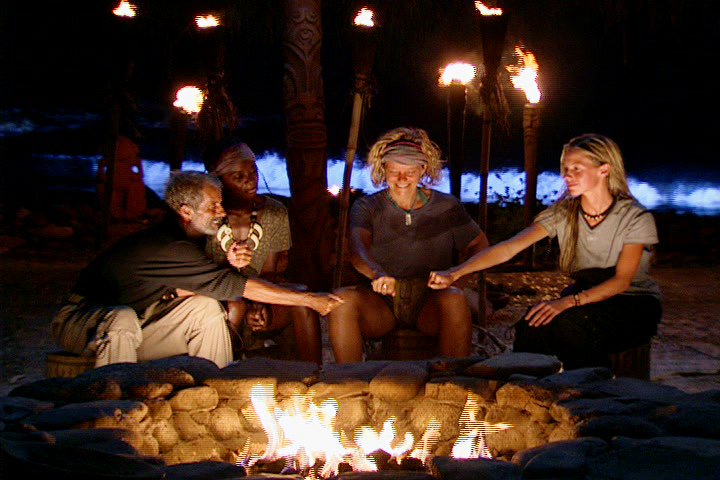
Of course, the one person who didn’t get any votes still ended up drawing the purple rock. This was seen as a little bit too unfair at a juncture as crucial as final four, so in future seasons, it became a fire-making competition between the two contestants with votes, giving them time to prepare and an opportunity to fight for their own safety.
That said, despite how unfair the rock draw seemed, the rules were ultimately unfair in a fair way. While the final four tie-breaker changed, rocks remained in play at other votes, and going to rocks was seen as so risky that it didn’t happen again until season TWENTY-SEVEN, twenty-three seasons and over a full decade later. Now, there’s tension on a revote because you don’t know if someone will flip or if it’ll go to rocks, and if it goes to rocks, there’s still tension as everyone nervously waits to see which one of them was eliminated by random draw. It was a genius change, really, and one that I think works out for the better. While the rule where votes count against you was a good idea and could have developed its own interesting metagame, this keeps things cleaner and easier to follow, and I personally think it’s a good alternative.
All right. That’s perhaps the biggest and most important rule change of early Survivor out of the way. Now we can finally head back to the beach with
PART THREE: MARQUESAS CHANGES EVERYTHING
So…Marquesas is a very historical season because, due to a variety of circumstances, it had a MASSIVE impact on the show that probably ended up completely saving the franchise. And the first circumstance? Um…I’m gonna need you to promise you’ll bear with me on this one. It’s gonna sound weird, but I can explain.
So, uh…one of the biggest influences in shaping the Survivor metagame MAY have been the 9/11 terrorist attacks.
At this point season 1 of Survivor was a huge hit, season 2 was even bigger, season 3 has wrapped up and is about to air, and season 4 is just about to head out to location, and then the world is shaken by an absolutely devastating terrorist attack, America begins a war on terror in the middle east, and suddenly production decides for very obvious reasons that hey, maybe going ahead with “Survivor: Jordan” is a really, really bad idea right now.
Seasons 2 and 3 both focused on upping the survival aspects of Survivor, and it led to lethargic, malnourished players. Survivor: Jordan seemed set to up that yet again, as Jordan contains some arid desert climates, but when production had to quickly readjust, it led to a “back to the beach” season set on a tropical island. While they attempted to hype the difficulty of this season as well, it just wasn’t quite as taxing on the players, at least in terms of nourishment. This led to a shift in the show on two fronts. First, with the survival elements diminished, the show began to focus more on the game elements. And second, when the players had more energy, they were able to focus more on the game elements as well. As a result, Survivor: Marquesas ended up changing the entire direction of the show.
The first big change to the metagame came at the hands of one Rob Mariano, AKA “Boston Rob,” AKA “The Robfather.” Boston Rob is one of the most well-known Survivor contestants, and for good reason. He was a cocky, brash Bostonian kid who was simultaneously jovial and an absolute throat-cutter, and also arguably the biggest character of the show up to that point. We’re going to end up talking about him a lot, because he’s been highly influential to the metagame over Survivor’s entire run, but for now, Rob’s initial influence on the game can be summed up in one quote:

“Doesn’t matter if my team is stronger physically, or even stronger mentally. Just that they obey. […] It’s all in how smart these people are. If they realize…if they need you…that’s what’ll keep them loyal. Right? Fear, basically. It’s a tough principal, but fear keeps people loyal. If they’re afraid they have something to lose, then they’ll do what they’re told to do. That’s straight out of The Godfather. It’s true.” ~Rob Mariano, Survivor: Marquesas Episode 3
Rob’s strategy was similar to the metagame that already existed. Rob intended to find a group of loyal allies and making sure they were loyal to him above others. However, where his strategy differed was that he was not at all interested in waiting until the post-merge to start playing an individual game. He was more concerned in taking control of the tribe, perhaps even to the tribe’s detriment. For example, immediately after delivering the above quote, he organized the vote-out of Hunter Ellis, the tribe’s strongest challenger competitor. Voting out a challenge asset that early had never been done before, and it was a particularly shocking move because their tribe had already been losing. The metagame of the time dictated that keeping your tribe as strong as possible to win as many challenges as possible and enter the merge with as many people as possible.
Rob’s theory was instead that being complacent would box you out of the endgame. Since Hunter had taken charge as tribe leader, the alliances naturally began forming around him. While Rob probably wouldn’t have been seen as a liability and could’ve slid by until the merge, he would have been at the bottom of his tribe. Rob didn’t want to be part of an alliance, he wanted to be the one who controlled the alliance, and he wanted to send a message to anyone who wouldn’t fall in line.
It ended up being a fairly revolutionary move, especially considering the addition of the tribe swap. After all, if the person helping your tribe most in challenges ends up being someone competing against you, it’s a good call to take them out to improve your own challenge equity, especially if they’re not a reliable alliance member for you.
But here’s where Boston Rob exits our story (for now), as he’s the first player voted off in the merge. It’s not surprising, considering his Maraamu tribe flounded, while the opposing Rotu tribe absolutely dominated. In the end, Rotu went into the merge with a 7 to 3 numbers advantage over Maraamu, and Boston Rob was immediately picked off, since he was the one most forcefully opposing Rotu.
At this point, the forerunner to win the game was a man named John Carroll. Within the 7 Rotu members, John had a four-person alliance known as the “Rotu Four” (alliance names in Survivor are never particularly clever). This gave him a very clear shot to the end. All he needed to do is pick off the former Maraamu members, then the three Rotu members not in the alliance. At this point in the game, he’s the one in control of the alliance and has decent challenge equity, so he stands a very good chance of making it to the final two, where he most likely wins. He has this game on lock. In fact, the only reason that Rotu came into the merge with only 7 members instead of all 8 is that John turned on an ally post-swap, just because he couldn’t count on him as a loyal number. John is in the lead and playing defensively. At this point, it’s his game to lose.
Enter the Coconut Chop Challenge.
“Parang Swing,” known better by its colloquial name “the Coconut Chop,” was an immunity challenge in which each contestant had three bags of coconuts, each held up by a rope. The contestants would answer trivia questions about Marquesas, and if they answered correctly, they would be able to chop another contestant’s rope. If three people chopped your ropes, you would be eliminated from the challenge.
This challenge was, on the surface, blatantly unfair, as it allowed the larger alliance to team up and eliminate the smaller alliance. But beneath the surface, it was deviously brilliant. You see, the Rotu Four quickly eliminated Sean Rector and Vecepia Towery, the two remaining Maraamu members, but then proceeded to target Kathy Vavrick-O’Brien (who knew she was on the outs of the tribe), then Paschal English and Neleh Dennis.
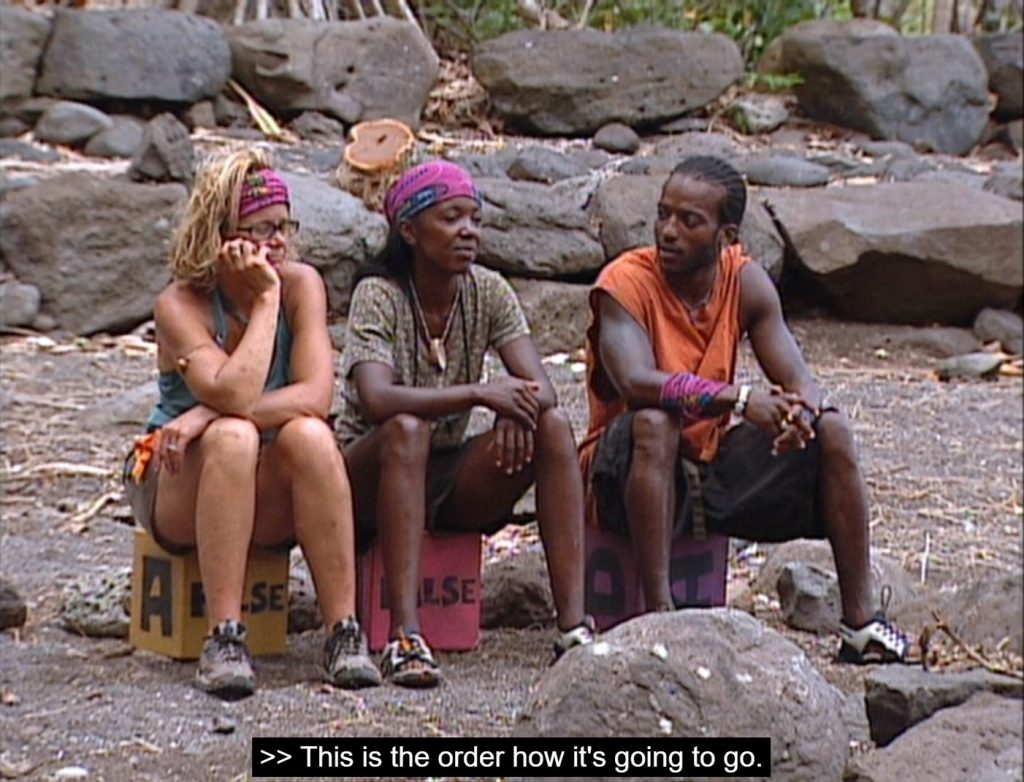
“I think the way that immunity came down, the coconut chopping and all, I think it signaled us that there was a pecking order and we were included in it, even though we’d been told that wasn’t true.” ~Pascal English, Survivor: Marquesas, Episode 8
As soon as Pascal and Neleh realized that they were 5th and 6th in the alliance, John’s plans immediately came crashing down as quickly a bag of coconuts. They, along with Kathy, joined up with Sean and Vecepia, forming an alliance of 5 out of 9 and gaining the majority. The Rotu Four were all eliminated back to back, with John being the first to go.

This also resulted in a much more dynamic endgame, as the final five were made up of two tight pairs—Pascal and Neleh vs. Sean and Vecepia—with Kathy in the middle. Kathy sided with Pascal and Neleh to take out Sean, but flipped back with Vecepia after she won immunity, leading to the aforementioned infamous rock draw that eliminated Pascal.
But even with Rob’s more aggressive playstyle, even with the first major flip and the fall of John Carroll and the Rotu Four, even with the more fluid endgame, we’re still not done talking about Marquesas, because we haven’t even touched on Vecepia Towery and how her under-the-radar win shaped the metagame moving forward.
Vecepia’s strategy was to keep quiet and fall in line until there was an opportunity to advance herself into a better position, and to subtly play people against each other to create those opportunities. As the Survivor Historians podcast points out in their Marquesas episodes, Vecepia would often say something deliberately designed to start drama, and then loudly proclaim that there was “too much drama,” further drawing attention to the issue while positioning herself as being apart from it, rather than an instigator.
Vecepia and Sean Rector were both black Christians and found themselves working together. They bonded over their faith and the fact that, as the only people of color on the season, they were facing social obstacles other players didn’t have to worry about. One of those obstacles was that people would perceive them as a pair whether or not they were actually working together, which in turn forced them to work together, making the bias self-fulfilling. Vecepia and Sean initially sided against Boston Rob and his ally Sarah Jones, but when the four realized Sarah and Sean were the most likely to go, they joined forces with former enemies.
When Vecepia, Sean, and Rob were placed on Rotu during the tribe swap, Vecepia gained trust with the other Rotu members by flipping on Rob. When there was an opportunity to shake up the power structure and take out the Rotu Four, she flipped back again. Kathy sided against her to take out Sean at the final five, but when she won immunity at the final four, she sided with the woman who had just voted out her closest ally to break up the pair of Pascal and Neleh. And then, perhaps most importantly, she betrayed Kathy by making a deal with Neleh, stepping down to give Neleh the final immunity in exchange for the other spot in the final two.
By allowing the more dominant, aggressive players of the season like Hunter, Sean, John, and Rob to sow the seeds of their own destruction, she slid by under the radar, riding the coattails of whoever was in control and then jumping ship whenever a better opportunity presented itself. This allowed her to first survive the implosion of Maraamu, and then come back from a 7-2 minority, making it all the way to the final two and ultimately pulling out the win. Vecepia never tried to take control of the game, but in a season where multiple players were already trying to take control, providing the opportunity for someone else to take control served her much better.
Unfortunately, because Vecepia’s strategy was low-key and passive, her win and the season as a whole weren’t well received by fans. However, the fluidity of Marquesas’s gameplay, where people realized that flexibility in alliances could benefit you more than sticking with them, had a major impact on the game moving forward.
PART FOUR: PLAYING BOTH ENDS FROM THE MIDDLE
There really isn’t much to talk about with season 5, Survivor: Thailand, except to say that it’s a game played about as flawlessly dominantly as possible. Brian Heidik came into the merge with the numbers, controlled his own numbers, and knowing that he’d need four jury votes to win, only bothered to lock in just those four votes. He dragged the only person in the game less likable than him to the end, knowing they’d have to vote for one of them whether they liked it or not. Thailand didn’t really change the metagame so much as it showcased a perfection of the pre-Marquesas metagame.

And then came Survivor: The Amazon and Survivor: Pearl Islands.
Survivor Amazon initially divided the tribes among gender lines, but the men and women ended up getting along well, and since the tribe swap was done in the form of a draft, it meant that both tribes largely consisted of people who wanted to play the game with each other. As a result, the post-swap tribes formed stronger bonds than the pre-swap tribe. However, the metagame had developed to the point that people weren’t playing in a vacuum anymore. There were already plenty of talking heads on the internet discussing Survivor and its strategy, and some cast members were aware of how to theoretically play optimally and increase their chances of winning.
Enter Rob Cesternino. Rob was a goofy 24-year-old living in his parents’ basement who used his jokey and nerdy demeanor to hide the fact that he had a sharp strategic mind. Throughout the first half of the game, he simply kept his head down and bonded with his tribemates. But when he got to the merge, that’s when he started making moves that would drastically change the Survivor metagame.
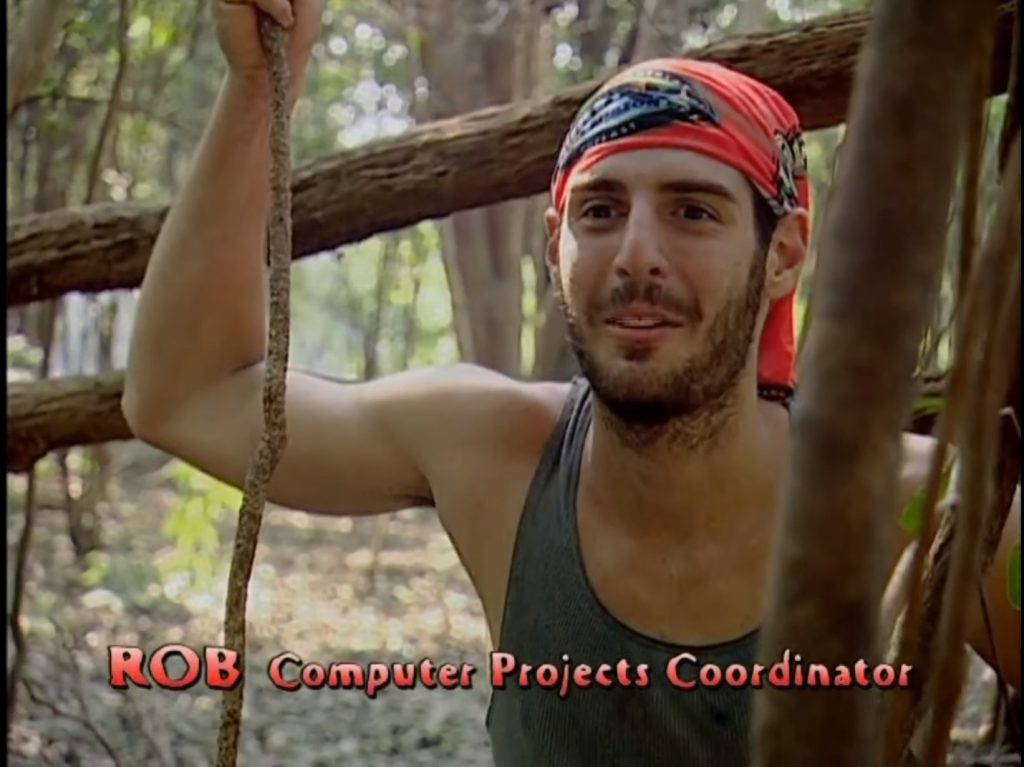
“Coming into this merger, it’s interesting to see what everyone is doing. Some people are busy building the shelter. Other people like myself are busy building alliances and working towards the end of the game. We’ll see if these guys that are building the shelter are all going to be here to use it for more than six or nine days.” ~Rob Cesternino, Survivor: The Amazon, Episode 7
The players on Amazon were a more restless lot, constantly looking ahead to when they’d have to turn on their own alliance, a mentality which allowed Rob to thrive. While other players were waiting for the right opportunity to take someone out, Rob made opportunities, making sure to always beat other contestants to the punch and never letting them control his own fate. He did this by maintaining relationships with both alliances that had formed, flipping back and forth. He constantly betrayed everyone’s trust, but regained it by working with them again when their interests aligned.
While Rob was often in a majority alliance, he wasn’t really in control of it. So instead of allowing himself to get boxed out during the endgame, he utilized a strategy he called “scooping up the bottom-feeders,” in which he’d go to the people who weren’t in power to organize them against the people who were, flipping back and forth to keep the numbers between the two alliances close enough that he was never expendable. When his ally Deena Bennett considered turning on their alliance, he made sure their alliance turned on her first. When Alex Bell confided that he would probably work with Jenna Morasca and Heidi Strobel to take him out at the final four, Rob jumped ship to target Alex. When he realized Christy Smith was considering working with Jenna and Heidi to force a tie, he brought the two back on board to help turn the vote against Christie…before targeting the two of them once again at the very next vote.
By doing this, Rob was able to use the post-merge to create fluidity in the game and keep a power structure from solidifying while simultaneously accumulating power himself. By targeting anyone on either side who was in a better position than he was, Rob was slowly able to weasel himself into the best position of the game. He maintained his position as a swing vote, and the fewer players there were in the game, the more powerful that vote became. By playing both ends from the middle, he reached the final five as the swing vote between two pairs, guaranteeing that he would make it to third and be able to compete in the final immunity challenge.
This strategy was evolved on in Survivor: Pearl Islands by Jon “Jonny Fairplay” Dalton, a skinny party boy who went into the show fully intending to play like a wrestling heel and become the biggest villain character in Survivor history.

Like Rob, he flipped and backstabbed his way to the end, using charm, coercion, and logic to win back the people he had screwed over for another round or two. When a twist allowed a player allowed Burton Roberts (who he had voted out earlier) to reenter the game, Fairplay recognized that Burton would be on the outs with either side. He immediately went to work, reassuring Burton that, while he had screwed him over in the past, it was in both of their best interests to work together moving forward. They had more power swinging back and forth as a duo than Rob Cesternino did on his own, and if they made it to the final two together, Fairplay could argue that they had made all the same moves, but unlike Burton, he had never been voted out.
Fairplay also was also very gifted at selling blatant lies (including the most infamous one in the show’s history; I won’t spoil it but if you know, you know), and despite players knowing how many lies he was telling, he still managed to convince most of them that they didn’t need to worry, that it was only everyone else he was lying to, that he was totally on their side.

“It’s gonna be me and Jon in the final two. I mean, Jon, you know, he’s a snake, he lies, but he also tells the truth, too.” ~Darrah Johnson, Survivor: Pearl Islands, episode 12, two episodes before Jon turns on her at the final four.
Between Rob Cesternino and Jonny Fairplay, viewers started seeing the success of a new, flashy form of play that wasn’t so dependent on loyalty. They weren’t alpha males who commanded respect or fear, but lateral thinkers who used chaos to reconfigure the numbers in their favor. Rob and Fairplay made the strategy of playing both sides viable. Both played this strategy masterfully, making it to third place.
But here’s the thing: that’s as far as they got.
Playing the middle is a very visible strategy, even moreso than controlling an alliance. Because players are very likely to turn on someone they know they can’t trust, it requires a lot of upkeep with both opposing alliances to let them know that they can still trust you, that you will still work with them, to prevent other players from simply voting them out. It’s a very entertaining strategy to watch that gives those who use it a high level of control, but it’s also means they’re very much out in front. By the time they get to the end of the game, everyone knows they’ve been bamboozled and is generally willing to cede that the flipper’s gameplay is superior and they deserve the win.
At the final three, there is absolutely nowhere to hide. One of the three will win immunity, and they cast the sole vote that decides who sits next to them facing the jury. They will almost always bring the person they think they have the best chance of beating. And if one of those three has played well in a very visible way? Well, they better hope they’re the one who wins that final immunity, since that’s the only way they’re getting to the final two.
This is why Amazon and Pearl Islands were won by Jenna Morasca and Sandra Diaz-Twine, respectively. Jenna and Matthew Van Ertfelda made it to the final three not because they were the strongest players on Amazon, but because they were the least threatening in their respective alliances. However, Jenna was able to go on a challenge run at the end where it counted, keeping herself safe through the final two votes and ultimately cutting her biggest competitor in Rob.
Conversely, Sandra Diaz-Twine was such an awful challenge performer that she became a non-threat, leading to other people being targeted ahead of her.
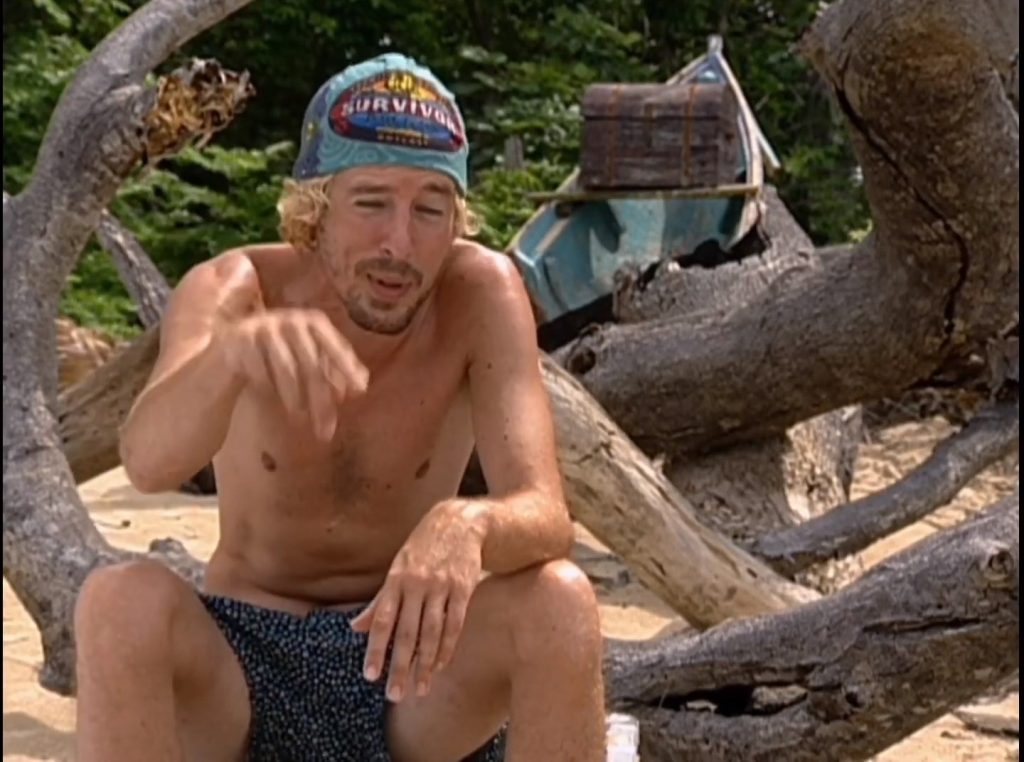
“[Sandra’s] days are numbered. We have bigger threats to get rid of first, but she’s not one of the final four. *laughs* And I’ve got a mil that says she won’t be the final one! *laughs*” ~Jonny Fairplay, Survivor: Pearl Islands, episode 3
Players targeting bigger threats meant that she was able to survive until the merge, where her lack of challenge ability actually worked to her advantage. Because everyone knew she would never win an immunity challenge, it was easy to say “we can always target her next round.”
Sandra’s strategy is often referred to as the “as long as it ain’t me” strategy, in which she survived round after round, all the way to the final two, by making sure she was never quite the top priority for elimination. So long as she could get the target to settle on somebody, anybody else, even her own allies, she could remain a non-threat long enough to survive one more vote. It’s a strategy centered around lurking in the shadows, flying under the radar, and not being the least liked person sitting at the end. Sandra’s game wasn’t built on trying to win so much as it was trying to be the only person who doesn’t lose.
If this sounds similar to Vecepia’s strategy, that’s because it is. Under-the-radar play was actually a very successful strategy in early Survivor. It tends to be a game that runs on the idea that the tallest nail gets the hammer. Anyone who sticks out for negative reasons in the early game gets eliminated, but once it becomes an individual game, the target falls on whoever sticks out most for positive reasons. It results in two main paths to the end. The first is to have such a level of control that you’re the person holding the hammer. The second, and arguably most successful? Just be the most average. You don’t have to be the tallest nail to win. You just need to make sure that you’re the tallest one left at the end.
The downside to this under-the-radar strategy is that it’s not flashy. While it certainly takes skill (and under-the-radar types have a very hard time in the early game, as the exact things that make them non-threatening in the individual portion of the game make them liabilities in the tribal portion), under-the-radar winners are deliberately passive and consequently aren’t generally considered the best “players” of the game.
The people who tend to be seen as the “best players” are usually more active, aggressive players, whether they be the leaders of an alliance, scrappy underdogs, or people who are able to successfully play the middle, have an uncanny tendency to go out in third place, right before the final Tribal Council. This is because the inclusion of immunity means you can’t organize a 2-1 majority at the final three. Instead, the final three vote will always be a plurality vote that will almost always target the best remaining player. To control the game and win, you usually need to win the final immunity challenge. In other words, it doesn’t matter whether or not you’re able to run circles around your opponents for most of the game. If you want to win, you have to be a closer.
It can be discouraging, I know. And Survivor’s producers certainly thought so as well. But we’ll get back to that in Part 2 of this series.
Anyway, at this point in Survivor’s history, the game has largely solidified into something balanced, and the metagame has evolved a few different strategies that have proven to be successful. Which brings us to
PART FIVE: ALL STARS AND THE END OF AN ERA
There is so much that can be said about Survivor: All-Stars, but despite that, we’re actually going to be talking about it relatively little. However, it’s important to note a few ways in which the season was unique.
First of all, as the name “All-Stars” indicates, the cast was made up entirely of previous players. To this point there had only been 112 previous players, and while that sounds like a big number, it was still small enough that all the players knew of each other, and many knew each other well. Some of them even knew each other in the biblical sense. This meant that this wasn’t just 16 strangers competing against each other. There were real relationships and real feelings tied up in this game.
Second, because these players had previous relationships and had in many cases been aligned with each other, production needed to come up with a way to split the alliances up. Their solution? Instead of dividing players into two tribes of 8, divide them into three tribes of 6. This had the added benefit of expanding the cast from 16 to 18.
Finally, players had different levels of infamy. Maybe you were a Richard Hatch or Rob Cesternino, who were known for dominating the first season or revolutionizing the metagame respectively. Or, maybe you were a Jenna Lewis or Amber Brkich, unassuming women who were never seen as a threat to win in either of their seasons. Guess which two were eliminated pre-merge and which two were in the finale?
If you guessed that the legends of the game made the finale and that the Ann Veals of the cast were eliminated early, you’d be very wrong. Here’s why:
Because they were separated into tribes of 6 instead of 8, there was less room to hide. On a tribe of 8, a majority and minority split is 5-3. That means you have a 5 in 8 chance of getting into a majority alliances, and even if you don’t, you have a 1 in 3 chance of the vote not landing on you. Conversely, in a tribe of 6, the split is 4-2. That means you have a 4 in 6 chance of being in a minority alliances, but only a 1 in 2 chance of the vote landing on you if you’re locked out. While 5/8 is technically a smaller number than 4/6, it’s not by much, and even if it’s larger percentage of the tribe, there are fewer positions in a majority that can be filled, and fewer people who can be eliminated before you. And while I’ll definitely go into how smaller tribes affect gameplay in Part 3, when they start getting used on a regular basis (here’s a teaser: it’s all about pairs), it’s not important to go into now because standard gameplay only applies if the season is being played in a vacuum.
Some players had bigger reputations, and some were hungry to make more of a reputation for themselves. And because there were fewer places to hide, the big game hunting started almost immediately. There were four previous winners on the season, and they were all in the first eight people to leave the game. The other four had legacies and reputations rivaling them. Essentially, the people with the big reputations were never given the room to play.
And because these players knew each other on a personal level? It hurt.
Remember “Boston” Rob Mariano, from Marquesas? You know, the Robfather? Well, it’s time to talk about The Robfather Part II.

“I want you to say that you’re gonna be true to the word you gave me.”
“The word I gave you—make no mistake about it, Lex—between you and I—and you wanna put our friendship on the line, I’ll put our friendship on the line over this—the word I gave you was that if I can take care of you, I will. I’m sorry, I cannot.” ~Lex van den Berge and Boston Rob after Lex threw away his game to protect Rob’s closest ally, Survivor: All-Stars, episode 11.
Rob came in with probably the biggest chip on his shoulder, having one of the lowest placements in the cast. He did everything he could to get as possible as far in the game, making and breaking deals constantly, and even betraying some of his closest real life friends. Between that and his budding relationship with Amber (who he’d go on to marry after the season; they’re still together today and have four daughters), with the two always operating in lockstep, they dominated the game—and were hated for it. In the finals, Rob was absolutely eviscerated by an angry jury, including some former friends, for the way he had played the game. He lost 4-3 to the woman who’d worked alongside him the entire game, her arguments for why she should win boiling down to “we both hurt and betrayed you, but Rob hurt and betrayed you more than I did.”
This marked the first time (or second, depending on whether or not you count Colby) that the season’s most visibly dominant player made it to the final two and lost. While it was easy to understand how his social play came back to bite him, many viewers thought Rob had played the best strategic game of the season and had been (for lack of a better term) robbed. The fanbase’s perception of Rob went from that guy who overplayed his hand in Marquesas to being regarded as one of the greatest to ever play, with Amber (the season’s actual winner) being regarded as an afterthought. In fact, I’m sure there are plenty of lapsed Survivor viewers who incorrectly remember Rob being the winner of the season.
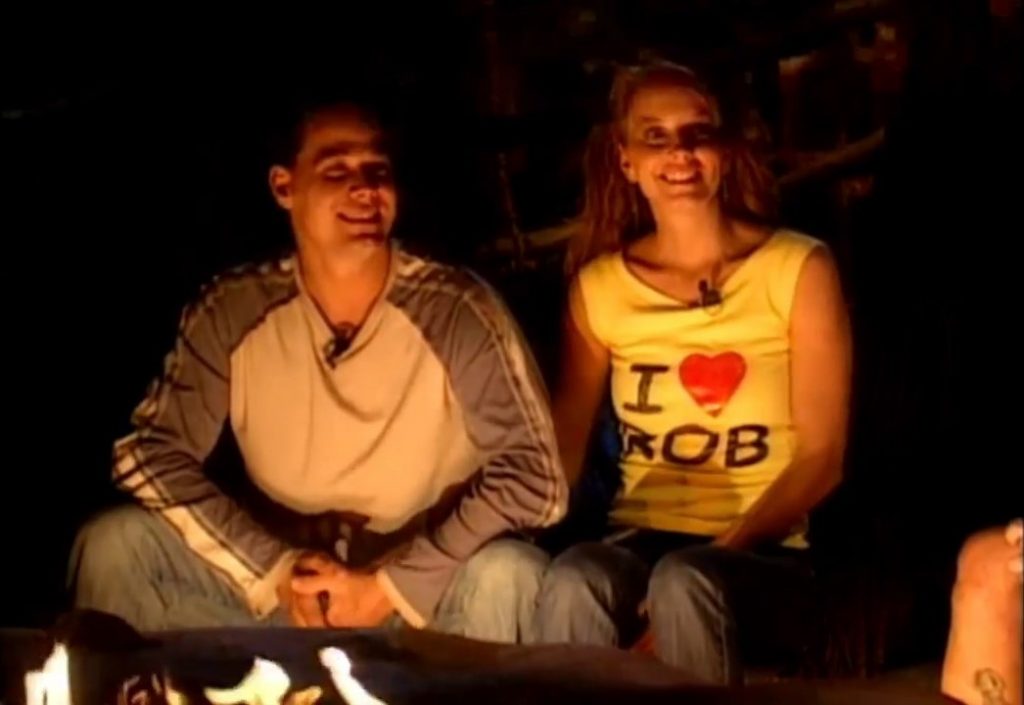
But let’s talk about Amber’s win. How did one of the most forgettable contestants from The Australian Outback, the girl who was only cast because casting needed “The Cute One” and their first and second choices of Colleen Haskell and Elizabeth Filarski turned them down, get crowned as the Best of the Best? Well, because they’re not played in a vacuum like newbie seasons, All-star seasons usually have their own metagame: one in which biggest threats are targeted as quickly as possible. Many of these seasons have as a result been won by under-the-radar women who seem like afterthoughts in casting—i.e., people who are perceived as the least threatening players on the cast. Of course, even those have changed as the metagame has evolved. Which of course I’ll get into as these seasons come up.
At this point, Survivor is past the peak of its cultural relevancy. All-Stars brought some viewers back, but they left just as quickly after being burned by the nastiness of the seasons. So where does the show go from here? Well, they experiment. They didn’t do much in terms of experimentation with the next two seasons. Season 9: Vanuatu saw them return once more to the men vs. women format, but this time with 18 players instead of 16, Season 10: Palau bumped up the cast to 20 (and then immediately eliminated two), and while the metagame didn’t change much, they played out in ways that were both interesting, unique stories and the minutia of the strategy is better covered by later seasons. The only major takeaway from either in terms of evolving strategy is that sometimes, it can be good to be the last person in an alliance that gets completely destroyed, as you immediately become less threatening and a number the opposing alliance can use to turn on each other.
EPILOGUE: THE SUMMATION
Well. It took us a while, but we’re finally through the first ten seasons of Survivor. Let’s take a look back at the metagame and see what we’ve learned.
First of all, let’s analyze the game and see what the optimal method of play is. At this point, the standard is 16 players divided between two tribes of 8, with a merge at 10 and a 7-person jury deciding between two finalists, so that’s what we’re looking at. With these numbers, optimal play is to form an alliance of five (gaining the majority in your tribe), with a core alliance of three (to gain the majority within the alliance). Get at least these five to the merge, and control the merge vote enough that your five becomes the majority. From there, all you need to do is maintain that majority until the final three. Do that, and you’ll make it to the final three every time, at which point…well, the result from there really depends on the outcome of the final immunity challenge, your negotiation skills, and your jury management.
However, this method of play was quickly identified, leading to counterplay. Players are less likely to stick with an alliance of five when they know they might be one of the people on the outs. What’s more, tribe swaps allow players to build new relationships to make flipping more viable, and rock draws encourage flipping over forcing ties. As a result, alliances formed in the first part of the game may not last, and the post-merge has become more fluid as a result.
So the question is this: what exactly is the skillset that Survivor rewards? Is it survival skills? Well, no, Borneo proved pretty early on that it’s not a game of outdoorsmanship, and consequent seasons only reinforced that notion. Is it about athleticism or the ability to win challenges? Again, while challenge wins have clutched the victory for some players, the players who won the most challenges in both Borneo and The Australian Outback came in second place. Strategic creativity? Likeability and social skills? The people who have most demonstrated those traits often lose as well. Leadership? Well, we’re finally getting closer, as the game can reward that skillset, but that’s not really a guarantee.
Ultimately, I think the skillset Survivor rewards is social survival. Not social excellence, just survival. While Survivor can certainly be won by the metaphorical lions, we’ve seen it favor chameleons who float by unnoticed and spiders who sit and wait for prey to come to them. To go back to the “tallest nail gets the hammer” metaphor, there are two strategies you can reliably expect to succeed. You can win through either active leadership or control (holding the hammer) or passive under-the-radar play (not being the tallest nail).
However, when the metagame began changing, it saw four different seasons (Marquesas, The Amazon, Pearl Islands, and All-Stars) where aggressive play by dominant male players eventually led to their downfall, with all but Amazon won by women who played very passive, under-the-radar games. In fact, through these first ten seasons, I’d say that only three (Borneo, Thailand, and Palau, maybe The Australian Outback as well) had winners who were in control for the majority of the game and were never in particular danger of losing. When players became more likely to flip it made maintaining control more difficult. As a result, the skillset the game favored started shifting towards the players who survived by blending into the background, letting the frontrunners overplay themselves out of the game.
Generally speaking, social norms encourage dominance in men. We value men for being leaders, for being bold and aggressive. Meanwhile, these same norms encourage subservience in women. Traits that are laudable for men make women come across as “bossy” or “bitchy,” so in order to have influence, women have to be more subtle about it, to convince others to do what they themselves would not be able to (or at least that’s my understanding, spoken from a complete lack of personal experience).
Believe it or not, at this point, the Survivor metagame actually favors women.
Kind of surprising to end part one of a series on sexism in Survivor’s metagame with the conclusion that the metagame favors women, huh? However, we’re only a quarter of the way through this thing, and changes are looming ominously on the horizon.
As of Season 10, Survivor is probably at its best as both a balanced game and entertaining television product, with many of the changes helping shake up complacent play and streamlining certain elements so they play better on television. The more unfair elements, such as swaps, are usually luck of the draw and don’t actively screw anyone over. But despite that, Survivor is falling out of cultural relevance. What’s more, despite strong acclaim for The Amazon and Pearl Islands, many found the winners disappointing.
As a result, producers decide it’s time to start making changes, attempting to see what exactly they can do to inject new life into the franchise, and maybe provide a safety net for those popular players that tend to fall just before the end. Survivor is going to start experimenting over the next few seasons, and while seasons 9 and 10 played with the formula a little bit, we’re going to start seeing more major format changes soon. And the most enduring of those changes makes its first appearance in season 11. In seasons 11-20, we’re going to look primarily at the introduction and evolution of a game element that drastically changed the face of how Survivor is played.
In Part 2, it’s time to talk about the Hidden Immunity Idol.
A huge thanks to everyone who helped make the first of this series of articles possible. I had no idea when I started that I would need to divide it into four parts, or that just the first part would end up becoming such a behemoth.
I’d like to thank my beta readers for their willingness to read it and provide feedback, including Kirstin Curry, Blake Strickland, Riley Kruger, Owen O’Brien, Will Hatch, and Foxx des Lauriers from Zoe’s Lobster Shack (as well as the many other members from there who volunteered) and particularly Wyatt the Word Weaver, who provided perspective from someone who’s never watched Survivor.
Special thanks also to some great Survivor writers and podcasters for some great analyses over the years that inspired this post. Thanks to their writing, recaps, and discussion, I’ve managed to write confidently about some seasons I haven’t actually seen since they first aired over 15 years ago. Of particularly help were the writings of Mario Lanza as well as the Survivor Historians podcast he does with Jay Fischer, Paul Asleson, and Mike Bloom. I’d also like to thank all the great Survivor coverage from Rob Has a Podcast, particularly the Evolution of Strategy series by Rob Cesternino and Josh Wigler. All these analyses were great jumping-off points for me and will undoubtedly continue to aid me through the subsequent parts.
And finally, thank you (yes, you) for reading all the way to the end of one of the most in-depth, niche projects I’ve ever tackled. I hope you’ll stick around for parts 2-4, which I’m sure will be equally robust.
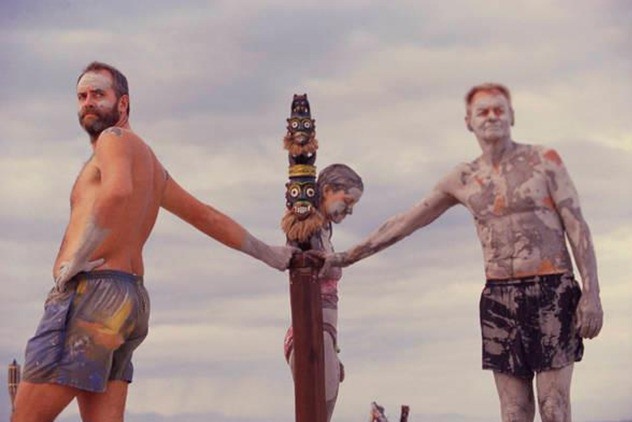
This is fantastic. Can’t WAIT to read parts 2-4.
I’m so excited (and also terrified now that the pressure’s on) to get into the idol in Part 2.
Came into this not knowing the other parts weren’t published yet.
I can’t wait for the next parts
I’ve said before that I really enjoyed reading this and wanted to expand on a point.
The rock tie-breaker was so infamous it affected multiple seasons. Sure, no-one drew rocks for over a decade, but it goes well beyond that.
Between seasons 5 and seasons 19, outside of Final 4s, there’s only 3 ties (4 if you include the unaired Micro one) and one of them would have to break by default because it was a 2-2-1 (good on you, Ulong), so realistically not only were deadlocks avoided, but ties altogether for 7 years were not a factor before the final 4.
To hammer it home, All Star’s Final 4 was dictated because Jenna was unaware the rules had changed to a fire-making challenge. Hell, Rob seemed to think that was the case in season 22, or at the very least lied to Natalie T. It only becomes known from Palau onwards what the procedure was. I’m also curious to know what you think about that as a procedure as a default to voting out and whether it actually was the procedure before Steph and Bobby Jon did it.
Really great stuff though.
Great read. Kudos! Looking forward foe the reamining parts.